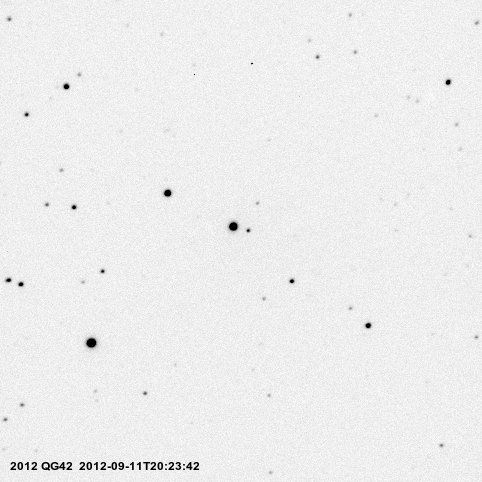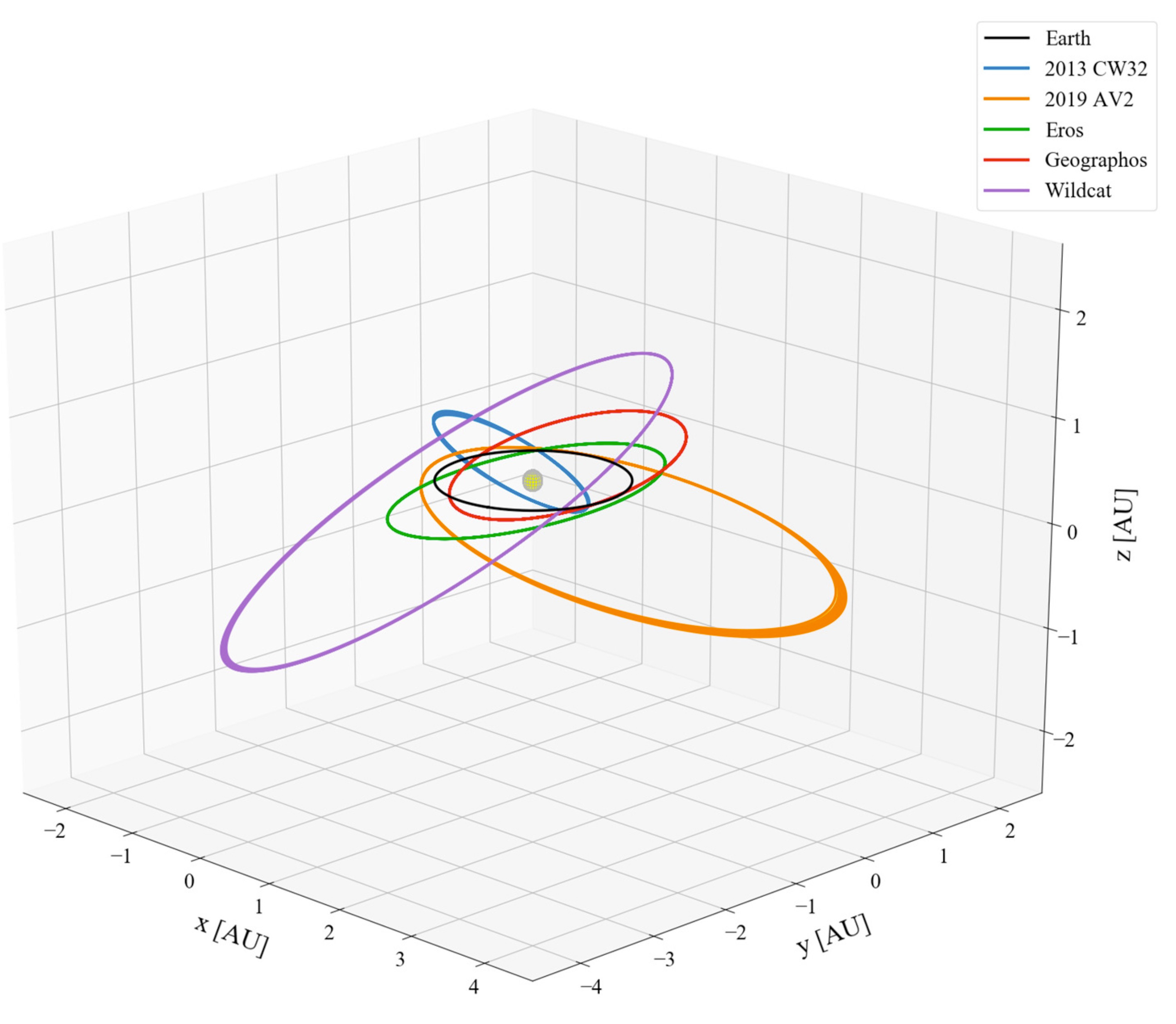 |
Department of Physics | AstroLab |
Orbits of Near Earth Asteroids
Apart from the major planets, the Solar System contains a large number of smaller bodies, i.e. the asteroids and comets. The ones that closely approach the Earth are labelled Near-Earth Objects. Near Earth Asteroids are sub-divided into members of the Aten, Apollo and Amor groups depending on their aphelion distance. While the probability of the Earth being struck by an NEO is extremely small, the consequences of such a collision are catastropic as the approach speed is typical 10s of km/s.
The aim of the project is to independently determine the orbits of several (~4) NEOs by making a series of positional measurements. This is achieved by measuring the asteroid's position on a CCD image relative to that of catalogued stars. By tracking an asteroid over the term its orbit can be well determined. The goal will be to obtain about ~10 astrometric observations per asteroid. A secondary aim will be to measure the distance to an NEO via simultaneous observations from Durham and La Palma.
The targets will be chosen from the Minor Planet Center lists, e.g. The NEO Page and/or the NEOs listed on the home page of www.spaceweather.com.
Below shows the flyby of 2012 QG42 as recorded with Far-East-14 on 2012 September 11 (movie created from 100 8-second exposures). 2012 QG42 is an Apollo NEO that was discovered on 2012 August 26 (only two weeks before our observations). It has an estimated diameter of 310m and made its closest approach to the Earth on 2012 September 14 at 7.4 lunar distances (2.8 million km).

Another example is shown in this movie of 2005 JE46 through a star field on 11th November 2005 from 20:51 to 21:25. At the time 2005 JE46 was 0.046 AU from the Earth and had a proper motion of 0.3 arcsec per second.
Having measured the positions of the NEOs over a few week period, the orbital parameters (and their uncertainties) can be derived and a 3D model for their orbits constructed. The figure below shows the heliocentric view of the orbits of five NEOs studied in 2019. The scale is in AU. With a 3D model, the probability of Earth impact can be estimated as a function of time for the closest approach NEOs.

Project Details Project References
| Back to the AstroLab Home Page |